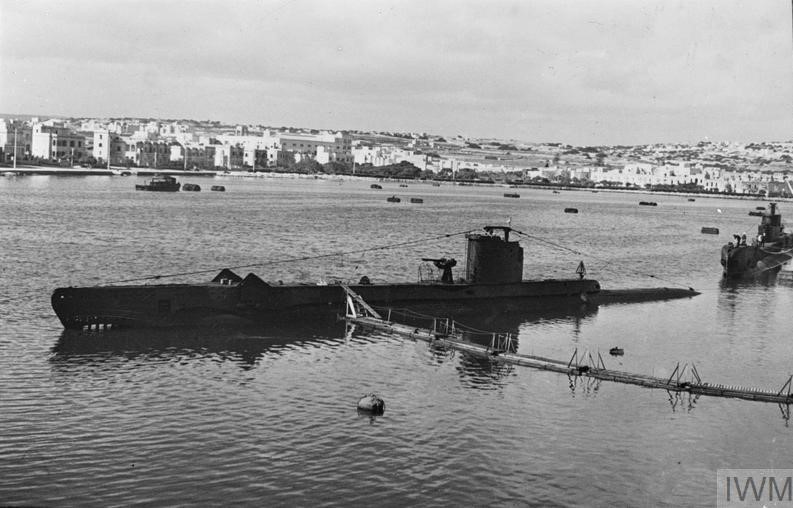It wasn’t long after we left the beach that I regretted choosing to sit on the windward side of the small fibreglass runabout. The wind had picked up, and each time the bow hit the larger waves I got a shower of cold salt water. Despite wearing a short wetsuit under my full length steamer I was already feeling the cold, and we still had 8km to cover to the dive site.
There were three of us on board: myself, Mohammed the dive guide, and another bloke Magid who also looked cold and probably wished he’d stayed home. We were on our way to dive the WWII wreck of the Italian freighter Alga, located off Djerba Island, Tunisia.
Diving in the off season assures you of smaller dive group sizes, but generally also means less opportunities as many operators shut up shop for the winter. I was lucky to have found a dive shop on Djerba that was willing to take me out.
Using a GPS to navigate, Mohammed backed off the throttle as we neared the dive site. After a little manoeuvring in the choppy seas, Magid heaved the anchor overboard. It was time to put on our gear and prepare to descend to the Alga.
The Alga was an Italian steamship of 1851 gross registered tonnage. One of the hundreds of Italian cargo vessels tasked with the supply of materiel to Axis forces in North Africa, she was en route Palermo to Tripoli on the 9th of October, 1942.1 In order to avoid the Allied forces stationed at Malta, her southward course tracked close to the coast of Tunisia.2
HMS Unbending P-37 was a U Class submarine launched on the 12th of May, 1941. (Many of her peers were similarly named, including HMS Unbroken, Unrivalled, Unshaken and Unswerving.) From July 1942 until June 1943, she was under the command of Lieutenant Edward Alfred Stanley, DSC RN.3

Alga and Unbending were fated to ‘cross paths’ on October the 9th, 1942, with Royal Navy Admiralty Document 199/1826 describing how the day unfolded aboard Unbending.
1450 hours – Sighted a schooner on a southerly course. Closed.
1500 – 1600 hours – Sighted 5 more schooners spread over about 5 nautical miles. One pair kept consistently together and one of them had a crowsnest on the foremast. In view of them being A/S (anti-submarine) schooners and the number of aircraft in the vicinity, it was decided not to attack until dark.
1858 hours – In position 34°09’N, 11°06’E engaged the schooner that was closest to the shore with the 12pdr gun. Fired four rounds of High Explosive. The schooner was abandoned. Proceeded alongside and set fire to the schooner. The schooner was about 150 feet long and loaded with large sacks whose contents were not examined.
1910 hours – Began a search for other schooners.
2205 hours – Sighted a darkened southbound merchant ship of about 2500 tons.
2225 hours – In position 34°02’N, 11°05’E fired two torpedoes from 1500 yards. One hit was obtained and the ship blew up. HE was heard for 10 minutes, possibly an escort but none was seen. P 37 then retired to seaward.4
Teetering on the edge of the lurching runabout, I held my mask in place and rolled backwards over the side. The rush of cold water was a shock, and I was breathing hard when I reached the anchor line. Trying to calm my breathing, I returned Mohammed’s ‘ok’ hand signal and released the air from my BCD. The anchor line whipped in our hands as we descended towards the wreck. The visibility wasn’t great due to the choppy sea, but soon the wreckage of the Alga appeared, lying 19 metres beneath the surface.
Reaching the wreck, Mohammed and I began exploring the Alga, starting with the remains of the hull.
I was not able to find out how many seamen were killed the day the Unbending’s torpedoes blew the Alga apart, but from the state of the wreck I can imagine casualties must have been high.
From what could be recognised on the silted wreck, the cargo of the Alga included vehicle tyres, gas masks, and at least one aircraft engine.
I found out later that the Alga was also carrying three Italian light tanks, which are today lying on the sea floor about 70 metres from the wreck. It would have been fascinating to see these, but I assume the conditions hadn’t been favourable for us to visit.
By the time we arrived back at the anchor line I was shivering with cold. After our ascent and three minute safety stop, we clambered back on board the boat and shed our gear. I think we were all wishing the kilometres away on the ride back to the beach, sheltering as best we could from the wind and spray.
Back at the beachside dive centre, I chatted to the owner about what we had seen. He asked me where I was headed after Djerba, and I told him my rough plan. In what I have found to be the typical Tunisian way, he then told me to contact him anytime if I ran into any troubles.
Diving the Alga was a unique insight into the WWII maritime history hiding beneath the waters off Tunisia. Considering the hundreds of merchant ships lost during the North African campaign, it is but one story of many.
- The Crusader Project, 2020, ‘Axis merchants lost on the North Africa Route 1941-1943‘
- Vannoy, A., 2012, ‘North African Campaign: WWII’s Ultimate War of Logistics‘, Warfare History Network
- Uboat.net, 2025, ‘HMS Unbending (P37)’
- ADM 199/1826, cited in Uboat.net, 2025, ‘HMS Unbending (P37)’
If you enjoyed this post, you may also like Diving the SS Thistelgorm, HMS Lundy and HMS Louis
Leave a Reply